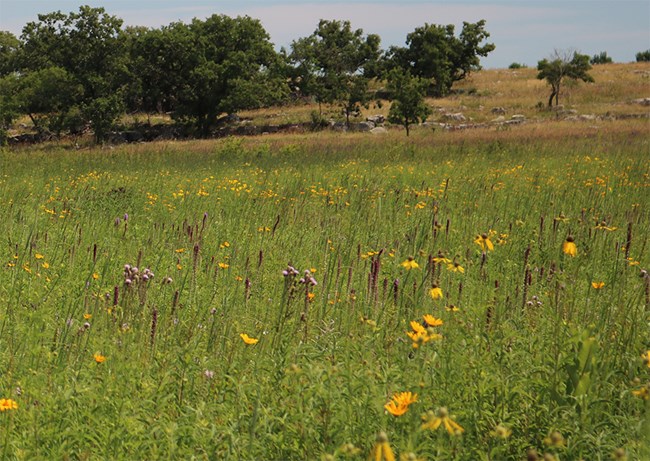
NPS-Photo
The park is located on slightly sloping land in a shallow glacial valley. Sioux Quartzite provides the critical fundamental resource associated with the park. A 15-foot high, Sioux quartzite outcrop runs north to south through the eastern half of PIPE. Soils are glacially derived tills, loess, and alluvium and vary in depth, fertility and productivity.
Vegetation mainly consists of four plant communities: virgin native prairie, restored prairie on former old fields, degraded prairie, and oak savannas. The Sioux quartzite prairie found along the quartzite outcrop is considered a significant resource and rare plant species occur throughout this habitat. A fish survey identified 25 fish species in Pipestone Creek (Dodd, et al. 2010). Small vernal pools in the quartzite formation provide a unique habitat for rare aquatic and semi-aquatic invertebrate species (Bowles 2009).
Source: NPS DataStore Saved Search 3507 (results presented are a subset). To search for additional information, visit the NPS DataStore.
Source: NPS DataStore Collection 4260 (results presented are a subset). To search for additional information, visit the NPS DataStore.
Check out the links below for other interesting science information about your park:
Air Quality in Parks
Learn about the air quality at your park and how it has changed over time.
NPS Geodiversity Atlas
An interactive map to explore the full variety of natural geologic (rocks, minerals, sediments, fossils, landforms, and physical processes) and soil resources and processes that occur in your park.
NPSpecies
Find out what plants and animals are present in your park or other parks.
Last updated: October 15, 2018
